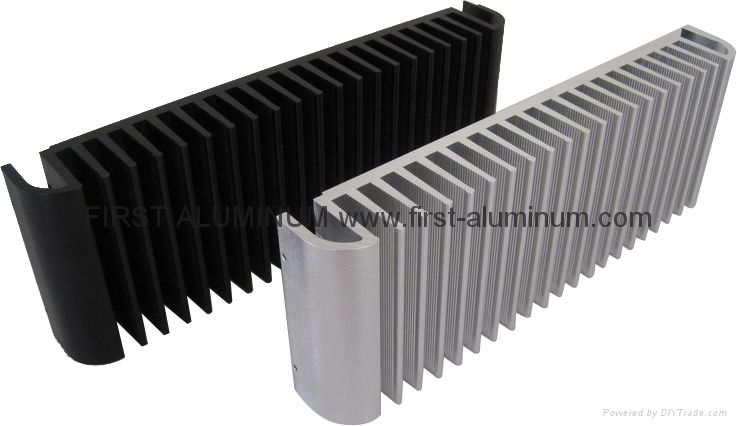Aluminium Heat Sink
Model No.︰FA194
Brand Name︰First Aluminum
Country of Origin︰China
Unit Price︰US $ 1 / pc
Minimum Order︰1 pc
Product Description
PRODUCT DESCRIPTION
1. All sizes are as shown on the drawing,and custom heat sinks can be made as per customers' designs.
2. Thousands of standard heat sinks in different sizes and shapes are in stock,various samples can be available for prototypes test.
3. More than 20 times high Pin-Fin ratio heat sinks can be extruded by 2,000 tons--3,500 tons extruding machine.
4. Ultra wide heat sinks can be manufactured by our unique welding technology.
5. Excellent performance of thermal transfer with dense fins,but competitive price.
6. Custom designs are acceptable,and CNC machinings are provided.
7. Widely applied in Appliances,Electronic industry,Thermoelectric coolers,Communication device,LED lighting,New energy device and various other industries,especially such as IGBT cooling system of UPS and Transducers.
What characteristics make a heat sink a good one? There's a number of factors to consider:
· High heat sink surface. It's at the surface of the heat sink where the thermal transfer takes place. Therefore, heat sinks should be designed to have a large surface; this goal can be reached by using a large amount of fine fins, or by increasing the size of the heat sink itself.
· Good aerodynamics. Heat sinks must be designed in a way that air can easily and quickly float through the cooler, and reach all cooling fins. Especially heat sinks having a very large amount of fine fins, with small distances between the fins may not allow good air flow. A compromise between high surface (many fins with small gaps between them) and good aerodynamics must be found. This also depends on the fan the heat sink is used with: A powerful fan can force air even through a heat sink with lots of fine fins with only small gaps for air flow - whereas on a passive heat sink, there should be fewer cooling fins with more space between them. Therefore, simply adding a fan to a large heat sink designed for fanless usage doesn't necessarily result in a good cooler.
· Good thermal transfer within the heat sink. Large cooling fins are pointless if the heat can't reach them, so the heat sink must be designed to allow good thermal transfer from the heat source to the fins. Thicker fins have better thermal conductivity; so again, a compromise between high surface (many thin fins) and good thermal transfer (thicker fins) must be found. Of course, the material used has a major influence on thermal transfer within the heat sink. Sometimes, heat pipes are used to lead the heat from the heat source to the parts of the fins that are further away from the heat source.
· Perfect flatness of the contact area. The part of the heat sink that is in contact with the heat source must be perfectly flat. A flat contact area allows you to use a thinner layer of thermal compound, which will reduce the thermal resistance between heat sink and heat source.
· Good mounting method. For good thermal transfer, the pressure between heat sink and heat source must be high. Heat sink clips must be designed to provide a strong pressure, while still being reasonably easy to install. Heat sink mountings with screws/springs are often better than regular clips. Thermoconductive glue or sticky tape should only be used in situations where mounting with clips or screws isn't possible.
Payment Terms︰ TT/LC
Product Image




